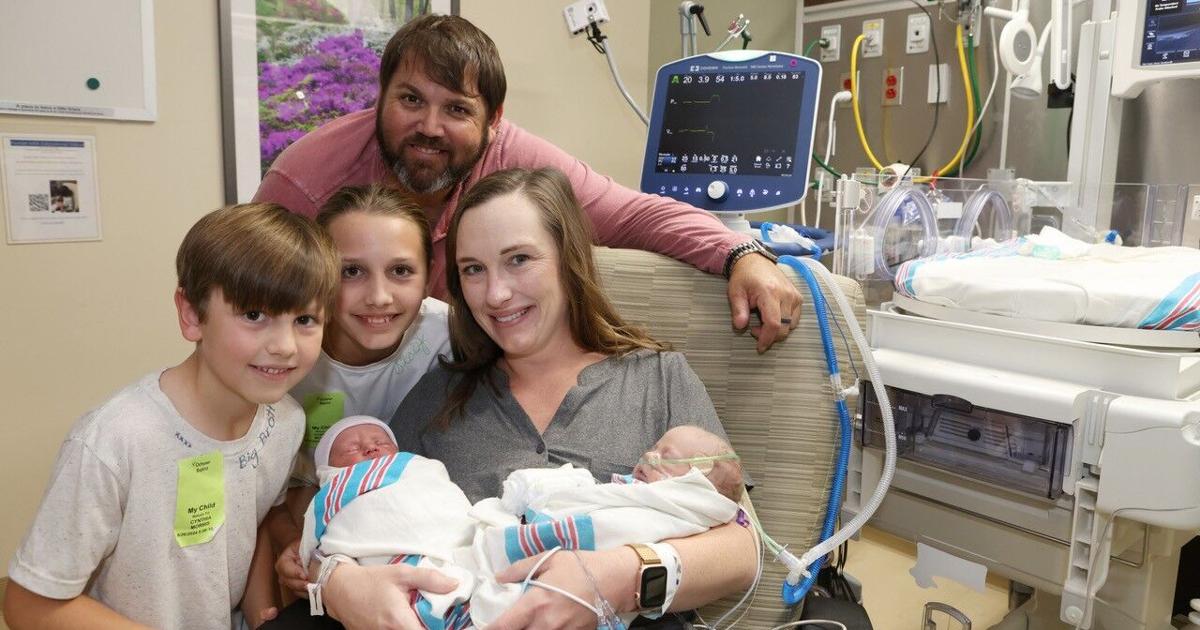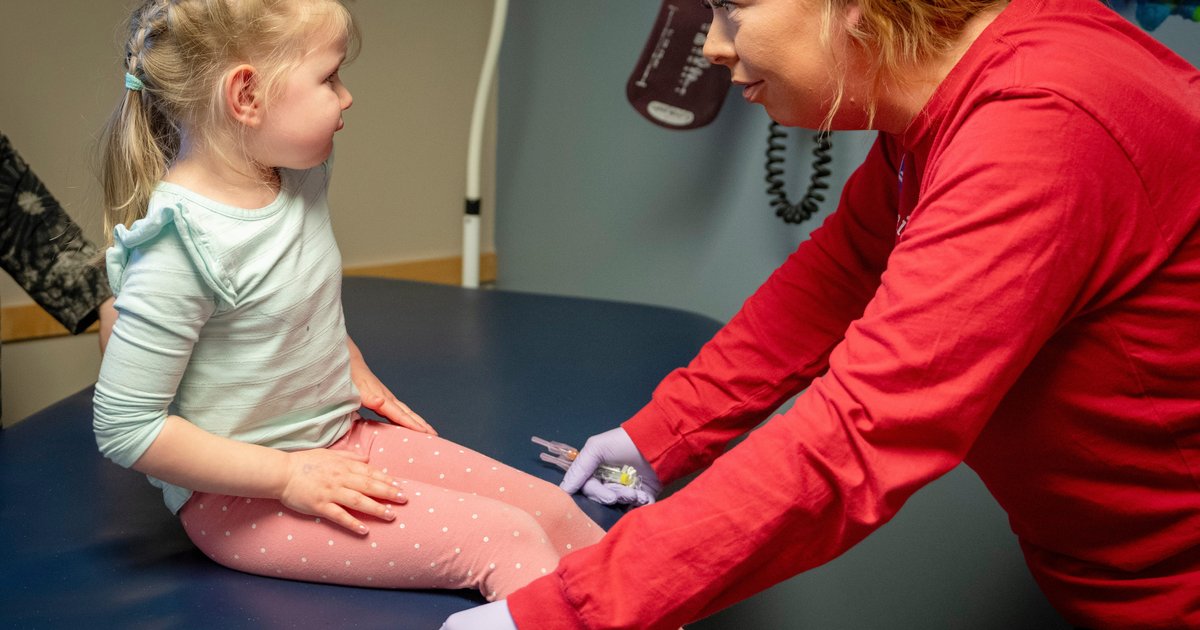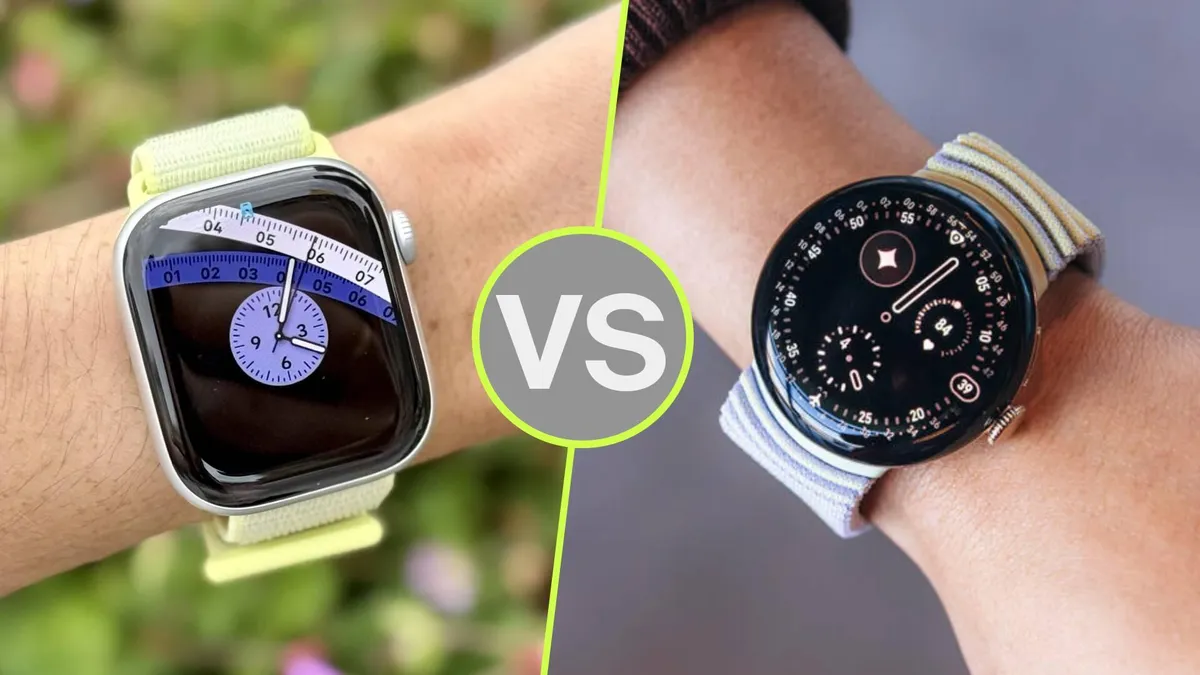
In 2024, at her 10-week prenatal checkup, Caitlin Bacon learned that her son had a congenital heart defect. When he was born in September, she knew they were going to have a long road ahead.
“The type of heart disease Samuel had requires multiple surgeries,” Bacon said. “On top of his stay in the NICU at the hospital.”
Bacon gave birth to twins, Samuel and Anderson, at 37 weeks at Ochsner Baptist.
At six days old, Samuel had his first heart surgery, the Norwood procedure, for hypoplastic left heart syndrome. This surgery lets the right side of a baby’s heart send blood with oxygen to their body. Normally, the heart’s left side takes care of this. In a baby with this condition, the heart’s left side isn’t developed enough to do pump the oxygenated blood.
The surgery was successful, but Samuel’s time in and out of the hospital was not over. After 44 days being monitored in the NICU, Samuel was permitted to go home with his family prior to his second surgery, the Glenn procedure.
However, he needed to be closely monitored before his next surgery scheduled for when he was 6 months old. The time between the first and second surgeries for this condition is a very fragile time in pediatric care.
To monitor Samuel’s vital signs, rather than the analog means of filling out a paper form and bringing it back to the hospital, Dr. Jessica Mouledoux developed something more efficient and easier for parents.
“There are multi-center studies that demonstrate a big improvement in morbidity and mortality if babies are monitored closely between their first and second surgery,” Mouledoux said.
A new app, a new age
Mouledoux, a pediatric cardiologist at Ochsner Children’s, led the charge for the development of an app to help monitor a baby’s vitals at home in between surgeries.
Occasionally, Mouledoux said that some high-risk babies are not recommended to go home during the time in between surgeries.
The app, that is connected to the electronic medical record system already in place across all of Ochsner’s hospitals, gives parents a daily questionnaire and instructions to read their child’s vital signs at home.
Questions include monitoring the newborn’s weight, temperature, heart rate, how many times has the child peed, any trouble breathing, food intake and more.
The app, which was developed in 2019 and launched in 2020, has also helped the clinic stay in contact with patients outside of New Orleans.
“The app allowed us to shift from having all inpatient visits to having some virtual visits and some inpatient,” Mouledoux said. “When we launched during the pandemic, nobody wanted to leave their house, much less come to a doctor.”
The Bacon’s live in Raceland — that’s about 50 miles from the hospital Samuel was being monitored — and, with three other children, including a newborn twin, the family needed this app to maintain some of their family routine.
“This was crucial for us to be able to allow the babies to go home with their families and still keep a close eye on them with daily monitoring via this app and keep the baby safe,” Mouledoux said. “Not having to confine them to a hospital and uproot their lives for months on end.”
At home vitals
Before parents leave the hospital, Mia Lowe, a physician assistant at Ochsner’s Children’s pediatric cardiology clinic, makes sure they have everything they need to monitor their child’s health.
“Most of the time, parents have been around us long enough to know how to use the tools to measure heart rate and blood pressure,” Lowe said. “I encourage parents to use the equipment while they have the team around them and help around them, because once they go home, it’s them and us via phone call.”
Before leaving the hospital, Ochsner provides families with all of the equipment needed to monitor their child’s health: thermometers, feeding tubes, a pediatric scale, a pulse oximeter and more.
It is Lowe’s job to monitor and check the online database constantly. She looks for red exclamation marks on incoming data from parents that could indicate a vital sign is wrong.
Mostly, Lowe and the nurses on the pediatric cardiology team are looking for weight gain — an important indicator that a baby is healthy, growing and ready for their next surgery.
The questionnaire also has a section set for notes if parents notice anything off about their equipment or have questions about their child’s care.
The next step, automatic deliveries
While the system is currently working for Mouledoux and her team, she hopes to make the process even more efficient for parents.
“In our adult population, there are a lot of devices that automatically enter data, as opposed to manually entering data,” Mouledoux said. “My hope for the future, in general, for the country, is that there are more infant adaptable devices that speak directly to the medical record.”



